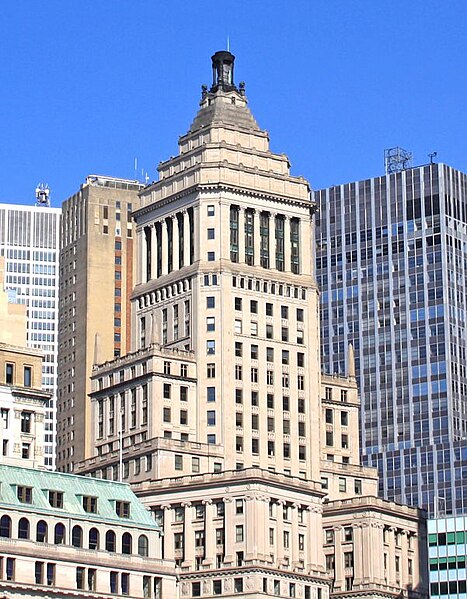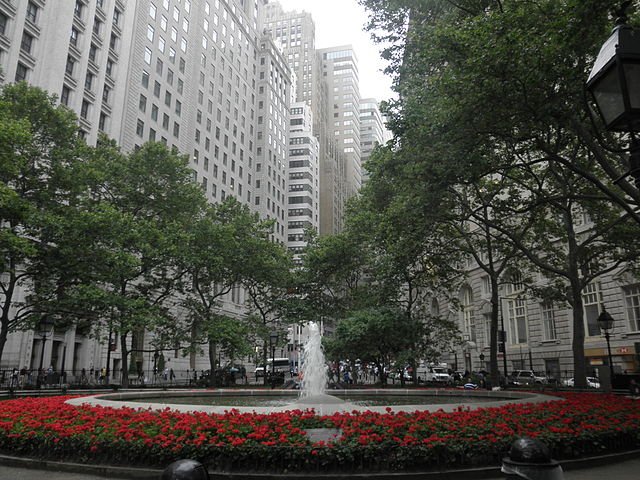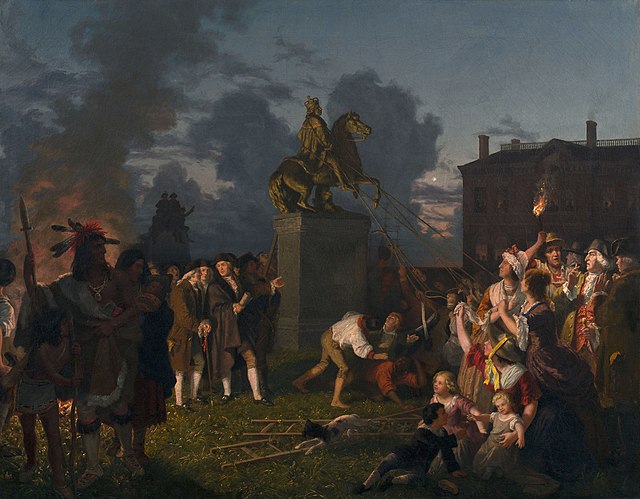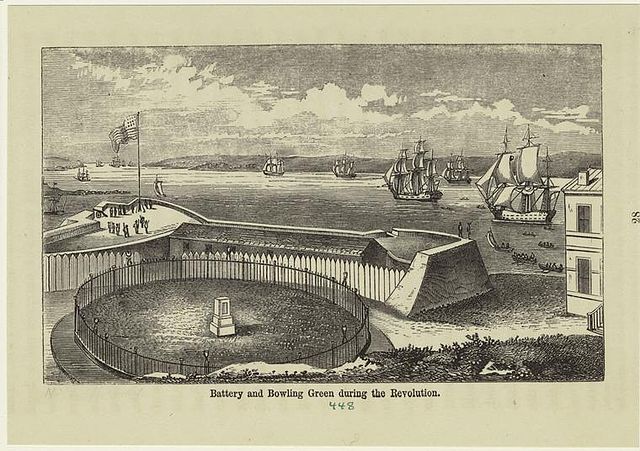26 Broadway, also known as the Standard Oil Building or Socony–Vacuum Building, is an office building adjacent to Bowling Green in the Financial District of Lower Manhattan in New York City. The 31-story, 520-foot-tall (160 m) structure was designed in the Renaissance Revival style by Thomas Hastings of Carrère and Hastings, in conjunction with Shreve, Lamb & Blake. It was built in 1884–1885 as the headquarters of Standard Oil, at the time one of the largest oil companies in the United States, and expanded to its current size in 1921–1928.
26 Broadway
The top of 26 Broadway's tower section contains a finial and kerosene cauldron.
Main arched entrance
Lobby passageway
Bowling Green (New York City)
Bowling Green is a small, historic, public park in the Financial District of Lower Manhattan, New York City, at the southern end and address origin of Broadway. Located in the 17th century next to the site of the original Dutch fort of New Amsterdam, it served as a public gathering place and under the English was designated as a park in 1733. It is the oldest public park in New York City and is surrounded by its original 18th-century cast iron fence. The park included an actual bowling green and a monumental equestrian statue of King George III prior to the American Revolutionary War. Pulled down during the revolution, the 4000-pound statute is said to have been melted for ammunition to fight the British.
Bowling Green looking north from the fountain
Pulling Down the Statue of King George III, N.Y.C., (c. 1859) A romanticized Victorian era painting with historical inaccuracies: the sculpture is depicted in 1850s garb, and Native Americans, women and children are at the scene.
George Washington at Verplanks Point by John Trumbull 1790; the remains of the George III statue pedestal can be seen at the bottom between the horse's legs.
An 1859 engraving showing the remains of the George III statue pedestal in Bowling Green Park








